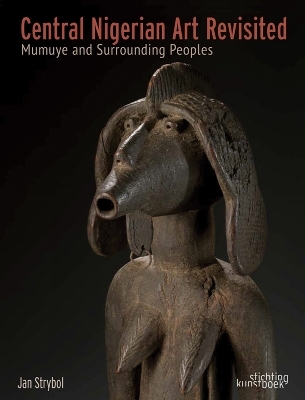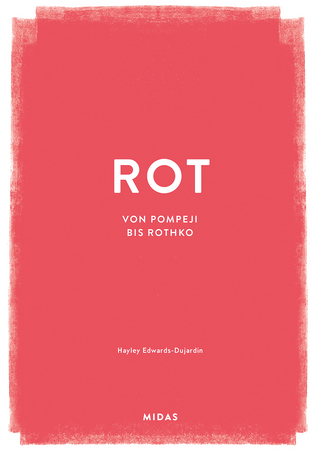
Central Nigerian Art Revisited
Mumuye and Surrounding Peoples
Seiten
2023
Stichting Kunstboek BVBA (Verlag)
978-90-5856-703-1 (ISBN)
Stichting Kunstboek BVBA (Verlag)
978-90-5856-703-1 (ISBN)
Jan Strybol examines the sculptural traditions of a number of peoples in central Nigeria. In addition to wood sculptures, he also pays attention to objects in bronze, iron, terracotta and other materials; art forms that have been very underexposed and have almost vanished.
In previous studies, Jan Strybol pointed out that - contrary to popular belief - sculpture flourished in northern Nigeria. Wood sculptures could be found just about everywhere, with the exception of part of the Far North. In this study, the author first examines the sculptural traditions of a number of peoples in central Nigeria, more specifically from the Jos Plateau and from the Middle Benue Valley to the source area of the Taraba River. These peoples can be described as non-centralised communities where art was mainly produced in perishable materials by part-time artists, in contrast to the centralised empires in the South (Ife, Benin) where full-time specialist sculptors created complex artefacts in durable materials (stone, bronze, iron).
Perhaps the most familiar ethnic group in the Central Benue region to lovers of African art are the Mumuye. Since the end of the last century, as a result of the advance of world religions, the traditional rites of the Mumuye have rapidly disappeared and with them the Mumuye sculptural tradition so much admired in Europe and America.
In addition to wood sculptures, Jan Strybol also pays attention to objects in bronze, iron, terracotta and other materials. These art forms have been very underexposed until now and have almost completely vanished. Finally, the author also delves into the artistic achievements of some little-known remnant groups within the Mumuye territory, which can boast of a rich art tradition.
In previous studies, Jan Strybol pointed out that - contrary to popular belief - sculpture flourished in northern Nigeria. Wood sculptures could be found just about everywhere, with the exception of part of the Far North. In this study, the author first examines the sculptural traditions of a number of peoples in central Nigeria, more specifically from the Jos Plateau and from the Middle Benue Valley to the source area of the Taraba River. These peoples can be described as non-centralised communities where art was mainly produced in perishable materials by part-time artists, in contrast to the centralised empires in the South (Ife, Benin) where full-time specialist sculptors created complex artefacts in durable materials (stone, bronze, iron).
Perhaps the most familiar ethnic group in the Central Benue region to lovers of African art are the Mumuye. Since the end of the last century, as a result of the advance of world religions, the traditional rites of the Mumuye have rapidly disappeared and with them the Mumuye sculptural tradition so much admired in Europe and America.
In addition to wood sculptures, Jan Strybol also pays attention to objects in bronze, iron, terracotta and other materials. These art forms have been very underexposed until now and have almost completely vanished. Finally, the author also delves into the artistic achievements of some little-known remnant groups within the Mumuye territory, which can boast of a rich art tradition.
After studying Ancient History and Semitic Linguistics, Jan Strybol completed his sudies in art history with a master's thesis on Chadian pottery in the collections of the Royal Museum of Central Africa at Tervuren (Belgium). He conducted ethnographical research in Northern Nigeria and Cameroonian Adamawa. He joined - together with professor Albert Maesen, geologist Jan Moeyersons and the archaeologist Johnny De Meulemeester - the Benue Valley Expedition (1970-1972) organised by the Tervuren Museum. The author is honorary Librarian of the Royal Museums of Art and History in Brussels. His publications mainly discuss various aspects of Mumuye society and related ethnic groups as well as Northern Nigerian sculpture.
| Erscheinungsdatum | 10.05.2023 |
|---|---|
| Verlagsort | Oostkamp |
| Sprache | englisch |
| Maße | 210 x 280 mm |
| Gewicht | 1244 g |
| Themenwelt | Kunst / Musik / Theater ► Kunstgeschichte / Kunststile |
| Kunst / Musik / Theater ► Malerei / Plastik | |
| ISBN-10 | 90-5856-703-6 / 9058567036 |
| ISBN-13 | 978-90-5856-703-1 / 9789058567031 |
| Zustand | Neuware |
| Informationen gemäß Produktsicherheitsverordnung (GPSR) | |
| Haben Sie eine Frage zum Produkt? |
Mehr entdecken
aus dem Bereich
aus dem Bereich


